ChemComm: A new era
Abstract
2012 brings exciting changes to ChemComm, including a Nobel Prize-winning chair and an increase in frequency. This Editorial reflects on how a successful 2011 has paved the way for the biggest year in the history of the journal.
A new year, a new chair
We are delighted to welcome Professor Richard Schrock (Massachusetts Institute of Technology, Boston, USA) as the new ChemComm Chair. Renowned for his development of metathesis in organic synthesis, for which he shared the Nobel Prize for Chemistry in 2005, Professor Schrock brings a wealth of experience in the areas of organic, inorganic and polymer chemistry to the Editorial Board.Some fond farewells
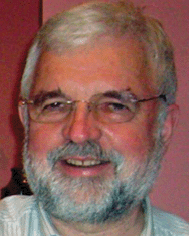 | ||
| Fig. 1 Peter Kündig | ||
Several other Editorial Board members have recently completed their terms of service with us. Thank you to Professors Ben Feringa, Nazario Martín, Ryong Ryoo and Wilfred van der Donk for all their efforts, support and ideas, which have helped ChemComm achieve tremendous growth and impact.
100 issues
As Professor Schrock takes the helm, ChemComm is making arguably the biggest change in its 48 year lifetime—we are increasing our frequency to 100 issues. But why are we doing this?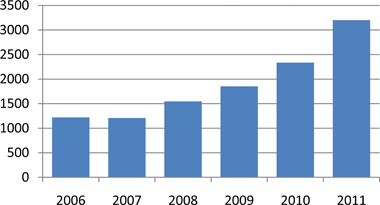 | ||
| Fig. 2 Number of communications published in ChemComm (2006–2011) | ||
Primarily, growth. Regular readers can't have failed to have noticed that ChemComm has grown considerably in recent years. In 2011, we published over 3000 articles, which is more than double the number we published five years ago (Figure 2). This means we are still the largest publisher of high quality communications within the general chemistry arena. This growth has been complemented by yet another rise in impact factor to 5.787 (2010 Journal Citation Reports® (Thomson Reuters, 2011)). Publishing more issues will enable us to keep pace with this extensive growth in high quality manuscripts, which shows no sign of letting up.
A key benefit for authors will be the more rapid assignment of pages numbers to their articles. The increased frequency of table of contents alerts will help scientists discover the latest cutting-edge research even more quickly. Readers will also have shorter contents lists to browse.
To celebrate our move to 100 issues, we'll be publishing some new types of content in 2012. Look out for Viewpoints about our most cited articles, as well as interviews with some of our most loyal authors, including Paul Raithby and Seiji Shinkai, both of whom have published more than 100 ChemComm articles and feature in issue 1.
Continuing our support of emerging investigators
Issue 1 2011 was our very first issue dedicated to the work of emerging investigators. The enthusiastic response to the issue has prompted us to publish a similar issue in 2012. And the good news is that it will be online very soon. For a preview of some of the articles that will be included in the issue, visit www.rsc.org/emi2012.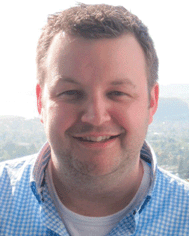 | ||
| Fig. 3 Scott Dalgarno | ||
Another first for ChemComm in 2011 was our Emerging Investigator Lectureship. From the numerous outstanding nominations we received, the Editorial Board awarded the lectureship to Dr Scott Dalgarno (Heriot-Watt University, UK) (Figure 3) for his contributions to the field of supramolecular chemistry, in particular the assembly and properties of calixarenes. Dr Dalgarno's lectureship took him to China, where he presented his work entitled ‘Metal–Organic Calixarene Assemblies’ at Challenges in Organic Materials & Supramolecular Chemistry (ISACS6) in Beijing; the 1st Chemical Science Symposium in Nanjing; and Zhejiang University in Hangzhou.
Nominations for the 2012 ChemComm Emerging Investigator Lectureship close in December 2011 and the winner will be announced soon.
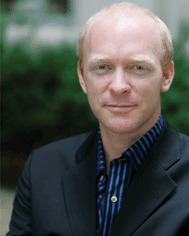 | ||
| Fig. 4 Amar Flood | ||
Dr Dalgarno wasn't the only supramolecular emerging investigator to receive recognition for his work in 2011. ChemComm also sponsored the 2011 Cram, Lehn, Pedersen Emerging Investigator Award in supramolecular chemistry, which was awarded to Professor Amar Flood (Indiana University, USA) (Figure 4) at the International Symposium on Macrocyclic and Supramolecular Chemistry (ISMSC) in Brighton, UK, in July. The winner of the 2012 award has recently been announced as Dr Jonathan Nitschke (University of Cambridge, UK). Dr Nitschke will present his award lecture at the ISMSC meeting in Otago, New Zealand, in January 2012 and during a lecture tour in Switzerland in late May.
Highlights in Chemistry
To help us celebrate the International Year of Chemistry, a host of world-renowned experts published their Highlights in Chemistry in 2011. In these short review-style articles, the authors looked back over the most significant chemical advances in their areas of research since the millennium and presented their outlook for the future. Read their contributions on the ChemComm website.Web themes
Our 2011 web themes have been a great success. We've showcased the latest cutting edge research in artificial photosynthesis; molecule-based surface chemistry; surface enhanced Raman spectroscopy; glycochemistry & glycobiology; catalytic C–C bond formation; supramolecular chemistry and fluorine chemistry. They can all be found on the ChemComm website by clicking on the ‘Themed issues’ tab. We have lots of exciting themes lined up for 2012, including organocatalysis, chirality and ionic liquids—further topics will be announced in due course on the ChemComm website and blog.Most accessed content
Tables 1–3 reveal the most accessed articles in 2011. Have you read them yet? Congratulations to all the authors for this excellent achievement.| DOI | Title | Authors |
|---|---|---|
| 10.1039/c0cc04909c | Ordered mesoporous materials as adsorbents | Zhangxiong Wu and Dongyuan Zhao |
| 10.1039/c0cc05733a | Homogeneous catalysis using iron complexes: recent developments in selective reductions | Kathrin Junge, Kristin Schröder and Matthias Beller |
| 10.1039/c1cc12390d | Photocatalytic hydrogen production | Thomas S. Teets and Daniel G. Nocera |
| 10.1039/c0cc03293j | Supramolecular gel chemistry: developments over the last decade | Jonathan W. Steed |
| 10.1039/c1cc10464k | Metathesis in total synthesis | Alois Fürstner |
| DOI | Title | Authors |
|---|---|---|
| 10.1039/c0cc03792c | A Covalent Organic Framework with 4 nm open pores | Mirjam Dogru, Andreas Sonnauer, Andrei Gavryushin, Paul Knochel and Thomas Bein |
| 10.1039/c0cc04386a | Porphyrin-based two-dimensional covalent organic frameworks: synchronized synthetic control of macroscopic structures and pore parameters | Xiao Feng, Long Chen, Yuping Dong and Donglin Jiang |
| 10.1039/c0cc04658b | Photocatalytic H2 evolution from neutral water with a molecular cobalt catalyst on a dye-sensitised TiO2 nanoparticle | Fezile Lakadamyali and Erwin Reisner |
| 10.1039/c1cc11121c | Photoactive graphene sheets prepared by “click” chemistry | Hang-Xing Wang, Kai-Ge Zhou, Yu-Long Xie, Jing Zeng, Na-Na Chai, Jun Li and Hao-Li Zhang |
| 10.1039/c0cc05002d | Rapid synthesis of zeolitic imidazolate framework-8 (ZIF-8) nanocrystals in an aqueous system | Yichang Pan, Yunyang Liu, Gaofeng Zeng, Lan Zhao and Zhiping Lai |
| DOI | Title | Authors |
|---|---|---|
| 10.1039/c0cc05419d | Porous metal–organic frameworks as platforms for functional applications | Hai-Long Jiang and Qiang Xu |
| 10.1039/c0cc05222a | Enantioselective synthesis of all-carbon quaternary stereogenic centers in acyclic systems | Jaya Prakash Das and Ilan Marek |
| 10.1039/c0cc03158e | Heterogeneous nanostructured electrode materials for electrochemical energy storage | Ran Liu, Jonathon Duay and Sang Bok Lee |
| 10.1039/c0cc05862a | Fe3O4 nanostructures: synthesis, growth mechanism, properties and applications | Ce Yang, Jiajia Wu and Yanglong Hou |
| 10.1039/c1cc11202c | Metal–biomolecule frameworks (MBioFs) | Inhar Imaz, Marta Rubio-Martínez, Jihyun An, Isabel Solé-Font, Nathaniel L. Rosi and Daniel Maspoch |
ChemComm Symposia
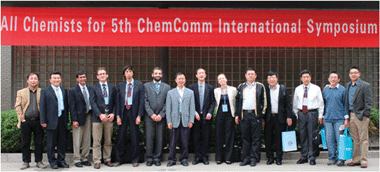 | ||
| Fig. 5 Speakers at the ChemComm symposium in Nankai | ||
It gives us great pleasure to confirm that more ChemComm symposia are planned for 2012. Further details will be available shortly.
Don't miss out on the latest news
You can find out about ChemComm symposia and other developments in a variety of ways. Follow us on Twitter (http://twitter.com/ChemCommun) and the ChemComm blog (http://blogs.rsc.org/cc/) or sign up for our e-alert and the ChemComm newsletter (http://www.rsc.org/alerts).A strong team, a strong journal
We hope you will agree that the future looks bright for ChemComm. Here in the Editorial Office, we endeavour to continue to improve ChemComm's quality, impact and service. But we can't do this alone. The help and support of our Editorial and Advisory Boards, authors, readers and referees are critical for the journal's success and we thank you all most sincerely. We hope to meet many of you in the year ahead at ChemComm symposia or at conferences and, as always, we would be pleased to receive your feedback and suggestions by tweet, email or blog comments.With our best wishes for a very happy and successful 2012,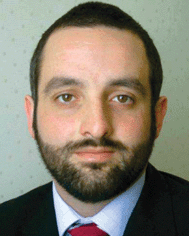 Dr Robert Eagling, Editor
Dr Robert Eagling, Editor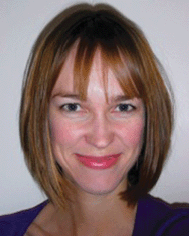 Joanne Thomson, Deputy Editor
Joanne Thomson, Deputy Editor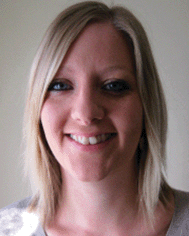 Philippa Ross, Senior Publishing Editor
Philippa Ross, Senior Publishing Editor
RSC Publishing growth and successes
Journals from RSC Publishing are delivering impressive results on Impact Factors, growth in quality content and international visibility and influence. The 2010 Journal Citation Reports® proved that our quality is better than ever, and that is thanks to our authors and referees. Of the top 20 journals in the multidisciplinary chemistry category, 25% are from RSC Publishing. Plus 83% of our journals listed in this year's report have an IF above 3.The number of articles published in our journals has almost doubled in just two years—and our share of the total has also nearly doubled in that time. More titles have recently joined our portfolio: RSC Advances and Catalysis Science & Technology. Also, Chemical Science received the ALPSP Award for Best New Journal 2011.
So more and more authors—from 70+ countries in 2011—are trusting us to ensure their research is communicated to the global community. Our Editorial and Advisory Boards are international, and our publishing operation is supported by offices in USA, China, India and Japan. Plus our content is downloaded by growing numbers of readers in virtually every country in the world.
These facts demonstrate that RSC journals are increasingly valued as a key resource for the very best research. www.rsc.org/journals
Books delivering the latest research advances, information, opinions and perspectives in modern science, confirms our reputation as one of the fastest and most dynamic publishers in the world.
In an age where content is key, we understand the importance of your online chemical science resource. The RSC eBook Collection now holds more than 1000 books, equating to over 25![[thin space (1/6-em)]](https://www.rsc.org/images/entities/char_2009.gif) 000 chapters, and spanning more than 40 years. The publication of our 1000th eBook in 2011 was a celebratory milestone.
000 chapters, and spanning more than 40 years. The publication of our 1000th eBook in 2011 was a celebratory milestone.
We continue to provide expert, interdisciplinary chemical science books: over 100 new print titles are planned for 2012 alongside the launch of several new series including:
• Food and Nutritional Components in Focus
• New Developments in Mass Spectrometry
• New Developments in NMR
• RSC Smart Materials
Our ability to deliver fast, accurate information to our customers was rewarded by the BIC Basic Award, an accolade held by few publishers. www.rsc.org/books
RSC Publishing platform
Access one million journal articles and book chapters in one simple integrated search.The RSC Publishing Platform provides the most valued interface and features that connect you with the highest quality scientific research. With one single search box, students, academics, researchers, scientists and professionals can easily access our books, journals and databases. www.rsc.org/platform
To access content on the go, download our RSC Mobile app for your electronic device. www.rsc.org/rscmobile
Free online access
Free online access is available to all our newest journals, and much more—all you need to do is register for an RSC Publishing Personal Account. Once logged in, you will be able to access all our free content including:• All content of our newest journals for the first two volumes
• Any articles that are part of a special free access promotion (e.g. ‘hot’ papers, web theme issues, etc.)
• A sample chapter from each book in the RSC eBook Collection
With your username and password you can access free content any time, any place—all you need is internet access. You can also save searches and favourite articles. Register now at www.rsc.org/personalregistration
If your institution/organisation is a current customer or on a free trial with IP registered addresses, you will be able to access all free content automatically, if authenticated. To request free access for your institution/organisation, go to www.rsc.org/freeaccess.
ChemSpider: The free chemical database
www.chemspider.com gives you the most comprehensive view of freely available chemical data from a single online search.Search: over 26 million structures from 400+ sources
Discover: related information from RSC publications, Wikipedia, Google Scholar & PubMed
Share: add and curate data
Access ChemSpider anytime, anyplace, anywhere with the free ChemSpider mobile app, www.rsc.org/ChemSpidermobile
ChemSpider SyntheticPages is a freely available interactive database of synthetic chemistry. It contains practical and reliable organic, organometallic and inorganic chemical syntheses, reactions and procedures deposited by synthetic chemists. Synthetic methods on the site are updated continuously by chemists working in academic and industrial research laboratories. ChemSpider SyntheticPages encourages submissions from graduate students, postdocs, industrialists and academics.
Discover ChemSpider SyntheticPages today: http://cssp.chemspider.com
RSC conferences and events 2012
The RSC organises a broad range of conferences and events to promote the advancement of the chemical sciences. Please visit the website for the most up to date listing: www.rsc.org/eventsThe major scientific meetings planned for 2012 include:
Challenges in Organic Chemistry and Chemical Biology (ISACS7)
12–15 June 2012, Edinburgh, UK
Challenges in Inorganic and Materials Chemistry (ISACS8)
19–22 July 2012, Toronto, Canada
Challenges in Nanoscience (ISACS9)
31 August–3 September 2012, Xiamen, China
Directing Biosynthesis III (DBIII)
19–21 September 2012, Nottingham, UK
| This journal is © The Royal Society of Chemistry 2012 |
